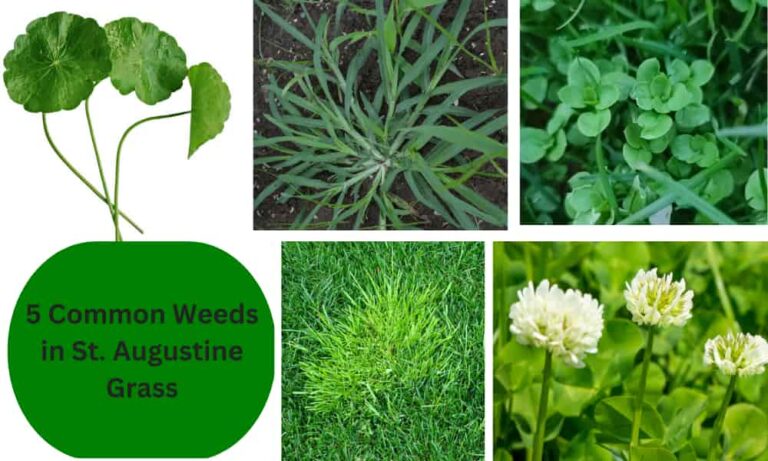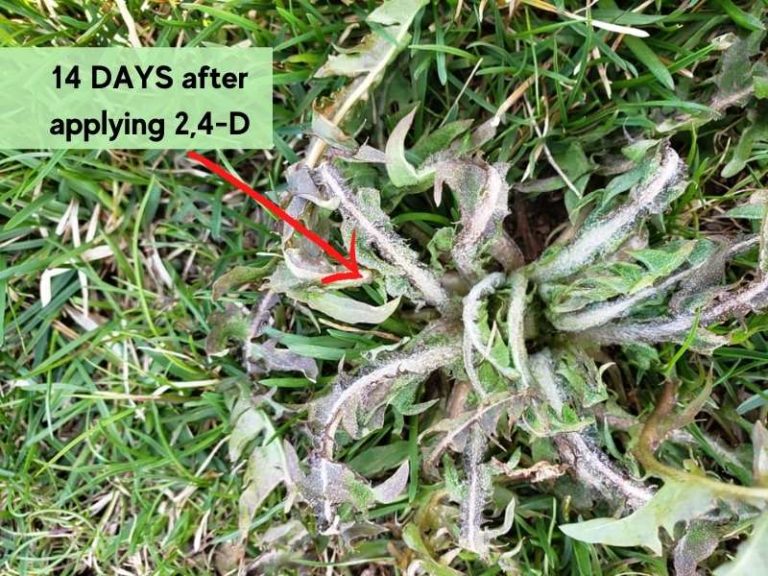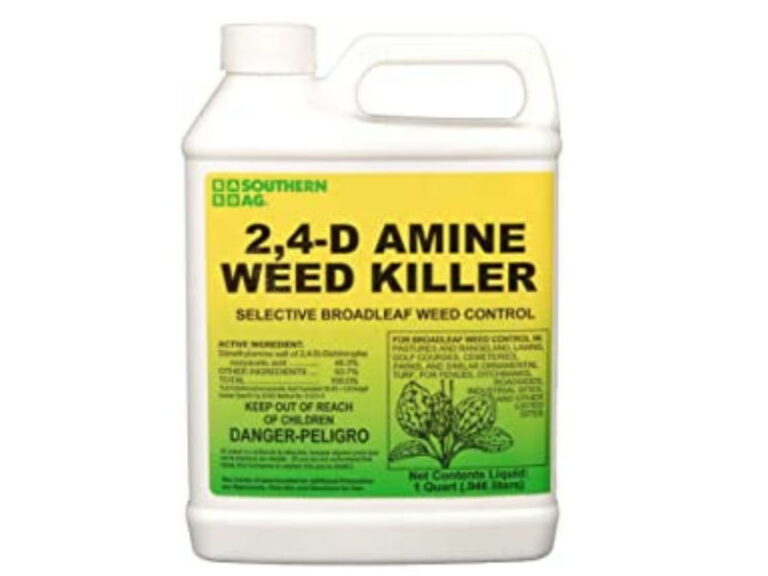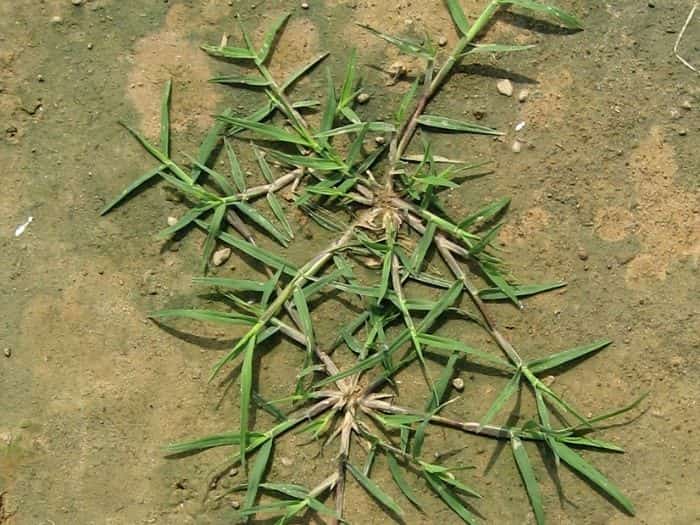Does Bleach Kill Grass? How to Use Clorox to Kill Grassy Weeds
Grassy weeds like crabgrass compete with turf for space, sunlight, nutrients, and water and can grow faster than the grass in your lawn. While there are great herbicides for controlling grassy weeds, you might want to use something that’s available for you – like bleach to get rid of a few instances of the weed. But does bleach kill grass? How do you use it?
Pour undiluted bleach in a plastic spray bottle and spot-spray grassy weeds in your lawn and allow the weeds time to die off. Pull up the dead weeds and dispose of them. Bleach will kill grass and any plant it comes in contact with, so it’s best to use it as a grass killer on driveways and pavers.
Will bleach kill grass?
Bleach kills grass by increasing the soil pH so high to make it difficult for grassy weeds to grow and thrive. You can use bleach to kill grass between pavers, cracks on concrete walkways or driveways, and lawns.
Take caution not to spray bleach on your lawn because it will kill any plant it comes into contact with. Spot-treat any weeds in your lawn using Chlorox to avoid injuring turfgrass.
The chemical name for bleach is sodium hypochlorite showing it has sodium and chlorine elements. When applied to grass, the sodium in the bleach concentrates the grass and soil, preventing water or nutrient absorption. Chlorine lowers the soil pH, making it too acidic for the grass to survive. Too acidic conditions and starvation stress the grass, eventually dying.
Signs of bleach damage on grass
Bleach works efficiently to remove grasses and other weeds growing in gardens or lawns. If you apply bleach to grass, the grass will show various signs due to the bleaching effect. Below are signs to look out for if you use bleach on grasses to kill them.
Yellowing and curling grass blades
When you apply small amounts of diluted bleach onto grassy weeds, the grass will turn yellow from the standard green, and the leaves curl. The sodium in the bleach saturates the soil and the grass, preventing the grass from absorbing nutrients from the soil. When nutrient supply is limited, the grass will stress.
A low supply of essential grass nutrients such as nitrogen lowers the chlorophyll content in the grass leaves. This is because nitrogen is a major component of chlorophyll, which gives grass its green color. Grass lacking nitrogen will eventually turn yellow.
High sodium concentration in soil blocks the roots from absorbing water and mineral salts. Bleach prevents the roots from taking up water; hence the leaves will curl to reduce the water loss rate.
When you apply undiluted amounts of bleach to grass in large quantities, they turn brown or white. Too much sodium and chlorine in bleach immediately make the essential nutrients, water, and mineral salts unavailable. Adverse lack of essential minerals, water, and nutrients significantly affects grass, turning brown or white.
Wilting
Bleach dries up grass by making essential water, mineral salts, and nutrients unavailable to grass. Chlorine in the bleach makes the soil too acidic for grass to survive in. Increased acidity and lack of sufficient minerals stress the grass, and in response, it dries up. Insufficient water supply interferes with normal plant processes like photosynthesis, and the grass will start to wilt and dry up.
Drooping and falling off of the grass
Bleached grass also hangs lowly facing downwards, and if the conditions worsen, it eventually dies and falls off. Bleach is highly acidic because of the chlorine it contains. Chlorine acidifies the soil, hence lowering its pH. Grass can’t thrive in highly acidic soils, thus, it will droop and eventually die by falling off.
Too much sodium in bleach also blocks the roots from absorbing water, mineral salts, and essential nutrients for their growth and development. When grass lacks water, its cells lose their turgidity and detach from the cell wall. The cells will die, making the whole grass die and fall off.
Bleach acts on the grass between 2-3 days, and on the third day, the plant will have suffered enough and finally die.
How to kill grass weeds with bleach
Every gardener deals with unending battles of killing weeds on lawns or gardens. Perennial troublesome weeds like dandelions or dallisgrass are more challenging to remove from lawns or gardens because they regrow over time.
However, there are biological, natural, and chemical methods to kill weeds, but they need multiple consistent practices to kill the weed completely. Household bleach such as Clorox used for whitening clothes can also be used as a chemical control method to remove weeds.
Here’s how to kill grassy weeds using Clorox bleach:
- Locate the points with unwanted grasses. It could be between pavers or concrete cracks on walkways, driveways, sidewalks, gardens, or lawns.
- Pour undiluted bleach into the spray bottle or garden sprayer and screw it tightly. To avoid overflow or spillages, be sure to fill the bottle to about three-quarters.
- Set the nozzle to mist and spot spray the bleach on the identified grass weeds. Target the leaves and the top of the roots. Be careful not to spray the product or nearby concretes or pavers because it will stain and bleach them. If you mistakenly spray the bleach on unwanted areas, rinse the place immediately with a lot of water to wash the product off.
- Pull the dead, brown grass where you applied the weed. Bleach takes between 2-3 days to kill grasses or weeds completely. Dispose of the pulled remains safely away in pits.
- Repeat the application of bleach if some grassy weeds in your lawn are still thriving.
Safety Precautions
Bleach is a highly corrosive substance because it has chlorine. When it comes into contact with skin or eyes, it irritates. When using Clorox bleach to kill grassy weeds, take maximum precautions when handling it. Such precautions are:
- Wearing protective clothing such as face masks, goggles, and hand gloves to prevent the bleach from catching your skin.
- Spray grassy weeds on a calm day with no winds. Strong winds will blow the bleach to objects nearby, such as driveways, walkways, or nearby grasses, and this causes stains on them and will burn the grass.
- Don’t apply the bleach when there’s an upcoming rain in the next three days. Bleach leaches quickly, and when washed away by rains, it will find its way into drainage systems and large water bodies. Such harmful chemicals are dangerous to aquatic life.
- Keep children or pets away from the bleached areas to prevent contamination. Bleach takes three days to act on grassy weeds.
- Bleach is highly non-selective when used as a herbicide. This means it will kill any grass species it comes into contact with. As such, I DO NOT recommend using beach for killing weeds on lawns or gardens.
- Don’t add other chemicals to the bleach because it’s highly effective on its own.
You will need a bottle sprayer or garden sprayer with tinny nozzles, homemade Clorox bleach, hand gloves, goggles, and facemasks. Wear protective gear like goggles, facemasks, and hand gloves to prevent the product from coming into contact with your body or skin.
Will bleach kill weeds permanently?
Bleach kills weeds permanently when used as a homemade chemical weed control method.
Bleach contains sodium and chlorine elements. When applied to grass, they reach the soil beneath and the roots system of the grass. Sodium in the bleach saturates the grass, making water or nutrients unavailable. Chlorine in the bleach also acidifies the soil by lowering its pH. These conditions make it difficult for the grass to survive and eventually succumb. The chlorine in the bleach makes the soil more acidic for a long time, making the soil unsuitable for plant survival. This prevents weeds from regrowing on the sprayed spots over time.
Bleach is suitable when used in spots you don’t want to plant other grasses or plants sooner. If you want to plant grasses on the sites again, use other methods to remove weeds from the spot. Such alternatives are concentrated white vinegar or selective herbicides.
References
- Paul A. Baumann, Peter A. Dotray and Eric P. Prostko, Texas A&M Agrilife Extension: Herbicides: How They Work and the Symptoms They Cause.
- Stanford University, Environmental Health and Safety: Sodium Hypochlorite (Bleach).





